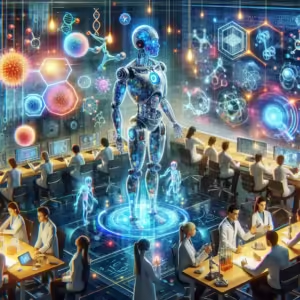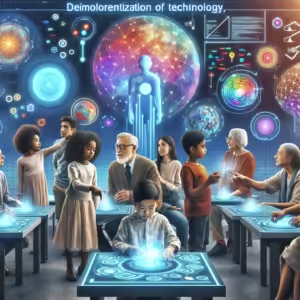Revolutionizing Architectural Education at Kennesaw State University
In the rapidly evolving world of architecture, the integration of Artificial Intelligence (AI) is transforming how students at Kennesaw State University (KSU) approach design and problem-solving. By fusing traditional design methodologies with cutting-edge AI technology, KSU is pioneering a new era of architectural education that prepares students for the future.
The Intersection of AI and Architecture
The influence of AI in architecture is far-reaching, impacting various aspects from conceptual designs to construction processes. At Kennesaw State University, this intersection is explored through innovative coursework and experiential learning, allowing students to harness AI tools to enhance their creative design capabilities.
Enhancing Creativity with AI
Traditionally, architecture is seen as a discipline that relies heavily on human creativity and intuition. However, with the introduction of AI, students are discovering new ways to approach design challenges:
– **Automated Design Proposals:** AI can generate multiple design options in minutes, giving students a broader canvas to work from and inspiring them to push the boundaries of conventional design.
– **Intelligent Data Analysis:** By analyzing large datasets, AI helps students understand various factors that impact design, such as environmental considerations, material efficiency, and urban planning regulations.
– **Predictive Modeling:** AI assists in simulating how a building will react to different scenarios, enabling students to make informed design choices and foresee potential issues.
Transforming the Learning Environment
Kennesaw State University is committed to integrating AI directly into its architecture curriculum, significantly altering the learning experience. This transformation encompasses several educational facets:
Curriculum Innovation
KSU’s curriculum ensures that students are well-versed in AI technologies through a variety of methods:
– **Project-Based Learning:** Students engage in projects that require the use of AI tools, providing real-world applications of theoretical knowledge.
– **Interdisciplinary Collaboration:** Courses encourage collaboration with other departments, such as Engineering and Computer Science, to broaden students’ skill sets and promote innovative thinking.
– **Guest Lectures and Workshops:** Exposure to industry experts offers insights into current AI applications in architecture and helps students stay abreast of the latest trends and technologies.
State-of-the-Art Facilities
To support this innovative approach, KSU has invested in state-of-the-art facilities and resources, ensuring that students have access to the latest technology:
– **AI Labs:** Equipped with advanced software and hardware, these labs provide a space for students to experiment and develop AI-enhanced designs.
– **Digital Fabrication Tools:** 3D printers and other fabrication tools allow students to bring their AI-generated designs to life, facilitating a hands-on learning experience.
– **Virtual Reality (VR) Studios:** VR technology enables students to visualize their projects immersively, enhancing their spatial understanding and design refinement skills.
Preparing Students for a Digitized Future
With AI becoming increasingly prevalent in architecture, Kennesaw State University is ensuring its students are prepared for the digital future. The integration of AI in architectural education at KSU offers numerous benefits for students, including:
– **Enhanced Employment Prospects:** Proficiency in AI technologies positions students competitively in the job market, as employers seek candidates who can navigate the digital landscape.
– **Innovative Problem-Solving Skills:** By learning to leverage AI, students develop a forward-thinking mindset that is essential for tackling modern architectural challenges.
– **Adaptability and Lifelong Learning:** Exposure to evolving technologies instills adaptability, encouraging students to remain lifelong learners in a constantly changing field.
Future Implications and Opportunities
As AI continues to evolve, the opportunities for its application in architecture will expand. Students and educators alike must be prepared to adapt to these changes and seize the potential benefits:
– **Sustainable Architecture:** AI can play a crucial role in designing energy-efficient buildings, aiding in the fight against climate change.
– **Smart City Development:** The integration of AI can lead to more efficient urban planning and the creation of intelligent, interconnected urban spaces.
– **Enhanced Client Interactions:** AI tools can facilitate better communication with clients, offering visualizations and simulations that bring design concepts to life.
Conclusion: Embracing the Future at KSU
Kennesaw State University is at the forefront of architectural education, embracing the potential of AI to transform the way students learn and create. By equipping students with cutting-edge skills and knowledge, KSU ensures that its graduates are well-prepared to lead the field of architecture into a promising, digitized future.
As architecture and technology continue to converge, the commitment to integrating AI in educational initiatives at KSU ensures that both students and educators remain at the forefront of innovation and excellence in the architectural arena. This proactive approach not only enriches the educational experience but also drives the architectural industry toward a more sustainable and technologically advanced future.








